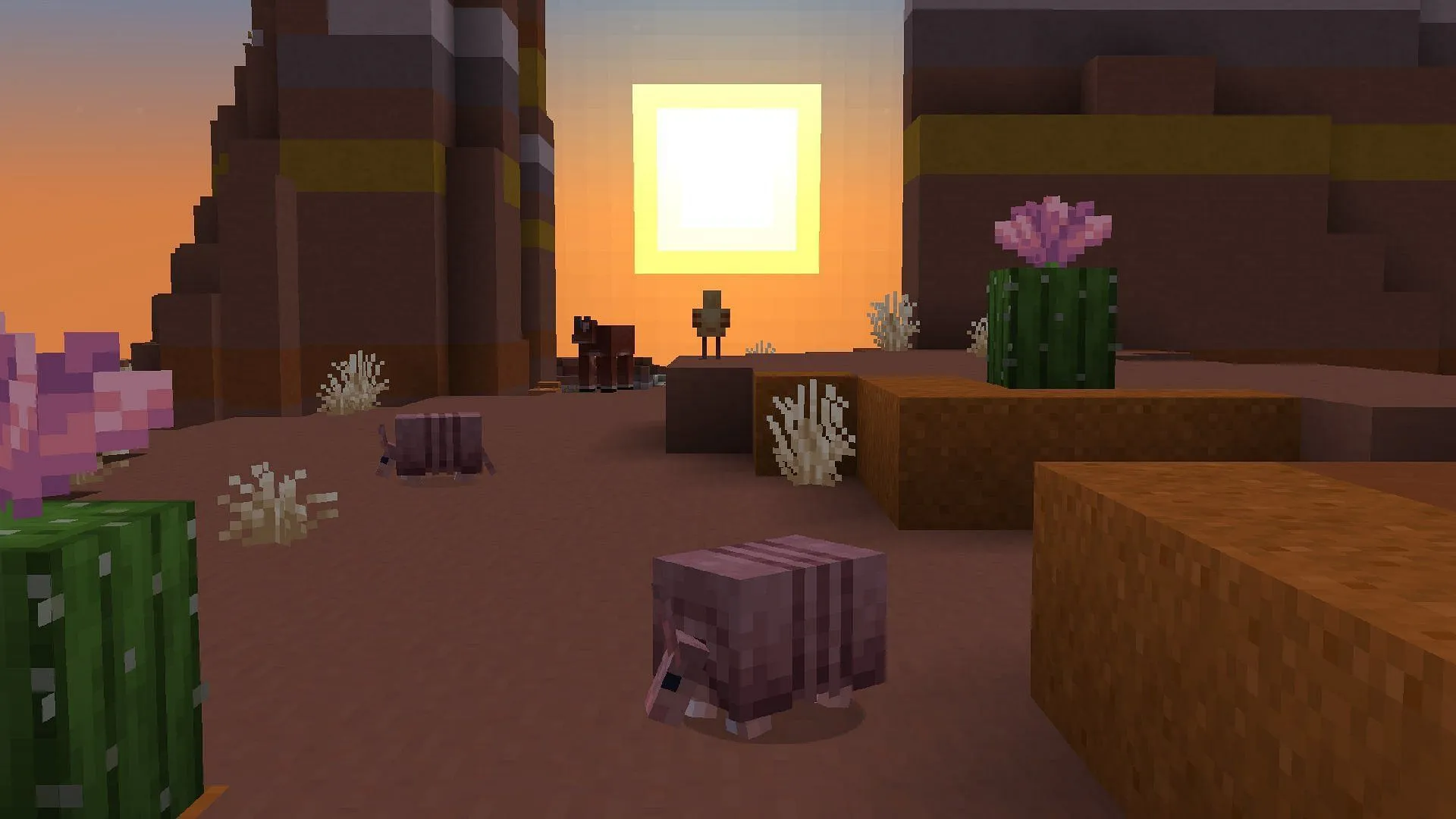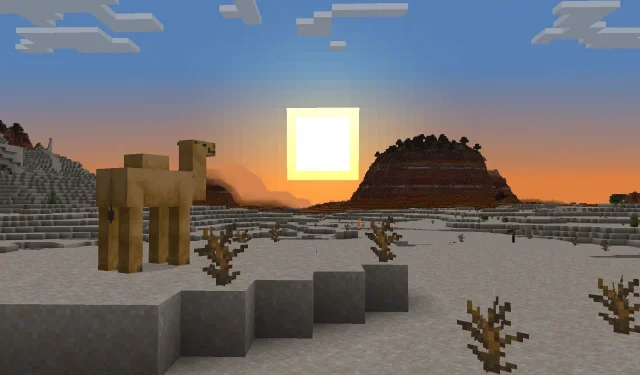Minecraft offers an expansive world filled with diverse landscapes, structures, and creatures. To facilitate exploration, Mojang organizes the game map into various biomes, each defined by its unique temperature and environmental characteristics. The primary classifications of biomes include warm, cold, and temperate regions, each harboring distinct terrains, weather patterns, available resources, and a variety of animal mobs.
The recent Spring to Life update introduced exciting warm and cold variants of familiar animal mobs, including chickens, pigs, and cows. Additionally, players can encounter various wolf variants spread throughout all of Minecraft’s biomes. This guide will delve deeper into the warm, cold, and temperate biomes, showcasing their unique features.
Exploring the Warm Biomes of Minecraft

Warm biomes are typically characterized by dry and hot conditions, often with limited resources. A central example is the desert biome, recognized for its sandy expanses populated solely by sparse vegetation such as cacti and dead bushes. Here, players will encounter husks—zombie variants immune to sunlight—as well as desert villages constructed from sandstone.
The savanna biome, adorned with acacia trees and tall grasses, is another warm climate hotspot, where horses and llamas roam freely. A unique subvariant known as the savanna plateau features dramatic cliffs, adding to the landscape’s appeal.
Distinct for its vibrant terracotta formations, the badlands (or mesa biome) is an exceptional warm biome where players can uncover gold deposits, often appearing at higher elevations compared to other areas. Abandoned mineshafts are plentiful in this biome, providing exciting exploration opportunities.
Not to be overlooked, the jungle biome boasts towering trees festooned with vines, creating a lush environment teeming with life, including parrots, ocelots, and pandas. The jungle is home to rare structures like jungle temples, which harbor valuable treasures. Additionally, the bamboo forest is part of this rich biome family.
While primarily underground, cave biomes are also classified as warm due to their unique features, such as glow berries and axolotls. Moreover, the warm ocean biome enchants players with its vibrant coral reefs and colorful tropical fish, alongside luminescent sea pickles.
The Cold Biomes of the Blocky World

In contrast, cold biomes are shrouded in snow and ice, featuring sparse trees and fauna. The snowy plains biome is a common sight, blanketed by a dense layer of snow where players can discover igloos suitable for shelter.
Taiga biomes abound with majestic spruce trees and wild flora, home to wolves. The snowy variant, known as the snowy taiga, introduces foxes and strays—skeletons equipped with arrows that inflict a Slowness effect on their targets.
The frozen ocean, dotted with massive icebergs, presents a chilling environment where polar bears roam, alongside remnants of ancient ruins. In addition, the frozen peaks biome offers towering snowy mountains, part of the stark cold terrain.
Diving Into Temperate Biomes

Temperate biomes are celebrated for their moderate climates and are among the most frequently encountered in Minecraft. The plains biome, characterized by expansive grassy fields, is often adorned with flowers and frequented by passive animals like cows, sheep, and pigs.
Another staple of the temperate biomes is the forest biome, which is home to oak and birch trees as well as a dazzling array of flowers. The dark forest variant, however, features a denser canopy that creates shadowy conditions where hostile mobs can spawn during daylight hours. This biome also houses the coveted woodland mansion, one of Minecraft’s grandest structures.
Recently added to the temperate classifications, the Pale Garden biome presents a variant of the forest with its distinct pale trees, enhancing the game’s biodiversity.
Swamps, recognized for their murky waters and clay patches, also fall into the temperate category. They are the exclusive spawning grounds for slimes and are home to witch huts where witches and black cats can be found.
Lastly, the meadow biome, which resides at higher altitudes, bursts with floral diversity and is often encircled by mountains. It’s a tranquil space ideal for village generation and building projects. Furthermore, temperate oceans like the lukewarm ocean and standard ocean biomes host a mixture of warm and cold marine creature life, including dolphins and cod.
Whether players favor the arid deserts, the icy plains, or the lush green meadows, Minecraft’s biomes offer a broad array of experiences. While players may spawn in various biomes, starting in the plains offers a balanced beginning before advancing to more challenging areas of Minecraft.


